
Alaska: Alaska Wilderness Spectacular - Cruisetour 8A (Post Tour)
Royal Caribbean®
See more of Alaska's spectacular scenery in unrivaled comfort traveling the full length of the Alaska Railroad in the glass-domed railcars of The Wilderness Express.

Executive Member Benefit
Executive Members receive an annual 2% Reward, up to $1,250, on qualified Costco Travel purchases
Digital Costco Shop Card
Member Exclusive: Digital Costco Shop Card with every Royal Caribbean® sailing†
Sailing Itinerary

Note: Cruise itineraries are subject to change. Please verify ports and times directly with the cruise line.
Overview
Vancouver, a bustling west coast seaport in British Columbia, is among Canada’s densest, most ethnically diverse cities. A popular filming location, it’s surrounded by mountains and also has thriving art, theatre, and music scenes. Vancouver Art Gallery is known for its works by regional artists, while the Museum of Anthropology houses preeminent First Nations collections.
Overview
Considered the "gem" of Southeast Alaska, the city is nestled against the ocean, tucked tight against the mountains, and back-dropped by the lush green of the largest national forest in the United States, Tonga's. Visitors will find that Juneau is not only the state's capital, but it's also a melting pot of history, unique topography, and jaw-dropping scenery found nowhere else on the planet. Whether it's wildlife viewing, glacier trekking, ziplining or just shopping for locally created artwork, visitors to this remote yet extraordinary region will certainly find a bit of "Alaska" to take home.
Overview
Humpback whales feed in Icy Strait above North Chichagof Island, an important travel corridor for many marine mammals, including federally threatened Steller's sea lions. The area's coastal marshes and mudflats are important as resting areas for shorebirds and waterfowl and provide spring-feeding areas for brown bears. Marbled murrelets feed in large numbers within the waters of Icy Strait and nest in the island's coastal old-growth forest.
Overview
One look at lovely Sitka and you'll know why Alexander Baranof, governor of the Russian American Company, decided to build his "castle" here. With views of island-studded waters and stately spruce forests reaching the water's edge, Sitka is considered Alaska's most beautiful seaside town. Sitka's past is a unique blend of Tlingit culture and Russian history. Our historic and scenic community is situated on Baranof Island, nestled between forested mountains and the great Pacific Ocean, on the outer waters of Alaska's Inside Passage. Sitka offers a combination of Native culture, Russian history, and Alaskan wilderness which will provide a diverse and unequaled experience. Wildlife adds to Sitka's natural beauty. Our mild climate, rich habitat, and relatively low human population make Sitka one of the best places to view wildlife. Nearby waters are a popular feeding ground for humpback whales in the late fall and early spring. Summertime provides a wonderful opportunity to view tufted puffins and other sea birds at St. Lazaria National Wildlife Refuge. While out on the ocean, you may also spot sea otters, sea lions, and other marine wildlife. Sitka lies at the heart of the largest temperate rainforest in the world, the Tongass National Forest. Enjoy the fresh outdoors on well-marked mountain trails. Take to the water for a picturesque boat trip or kayaking adventure among nearby islands or charter a boat to nearby fishing grounds to fish for world-class salmon and halibut.
Overview
Skagway, with a population of 862, is located in the Upper Lynn Canal at the northernmost point on the Inside Passage in Southeast Alaska, 100 air miles north of Juneau and 110 road miles south of Whitehorse, Yukon Territory. The City of Skagway is geographically the largest city in Alaska with 455 square land miles.Skagway's history and spectacular natural setting combine to create unparalleled sightseeing and recreation opportunities. Poke around on your own, or select from a variety of commercial tours. Either way, you will be amply rewarded with the sights and activities in and around Skagway.
Overview
Stretching over 90 miles long and covering over 1,350 square miles in area, Hubbard Glacier is the largest tidewater glacier in North America. It is also one of the most impressive, a 300-foot wall of ice rising sheer and jagged from the ocean. You may hear the rumble and see the monumental splash as the glacier severs into great ice chunks, known as "calves."
Overview
Situated at the head of Resurrection Bay on the Kenai Peninsula, Seward is one of Alaska’s oldest and most scenic communities. Known as the "Gateway to Kenai Fjords National Park" Seward is a picturesque town located 126 miles south of Anchorage. Visitors can easily reach us via the Seward Highway Scenic Byway, the Alaska Railroad, bus, air, or cruise ship. Upon your arrival, you will discover our bustling harbor and historic downtown district filled with quaint shops and art galleries. Experience trophy sport fishing, glacier and wildlife cruises, sailing, hiking, kayaking, flightseeing, summer dog sled rides, and more. Seward is also a winter wonderland offering cross-country skiing and snowmachining adventures. At 3,022 feet, towering Mt. Marathon provides a breathtaking backdrop for the town. Behind Mt. Marathon and extending down the coast lies the Harding Icefield, measuring 35 by 20 miles. Flowing from the Harding Icefield are many glaciers, eight of which are tidewater glaciers, calving icebergs into the sea, and reaching the coastline between Seward and Homer. A wide range of accommodations, restaurants, RV parks, tent camping, and visitor services are available. Wherever you go in Seward, you’ll find friendly hospitality and a sense of pride among our residents. We invite you to visit our community any time of year and experience the real Alaska!
Overview
Situated at the head of Resurrection Bay on the Kenai Peninsula, Seward is one of Alaska’s oldest and most scenic communities. Known as the "Gateway to Kenai Fjords National Park" Seward is a picturesque town located 126 miles south of Anchorage. Visitors can easily reach us via the Seward Highway Scenic Byway, the Alaska Railroad, bus, air, or cruise ship. Upon your arrival, you will discover our bustling harbor and historic downtown district filled with quaint shops and art galleries. Experience trophy sport fishing, glacier and wildlife cruises, sailing, hiking, kayaking, flightseeing, summer dog sled rides, and more. Seward is also a winter wonderland offering cross-country skiing and snowmachining adventures. At 3,022 feet, towering Mt. Marathon provides a breathtaking backdrop for the town. Behind Mt. Marathon and extending down the coast lies the Harding Icefield, measuring 35 by 20 miles. Flowing from the Harding Icefield are many glaciers, eight of which are tidewater glaciers, calving icebergs into the sea, and reaching the coastline between Seward and Homer. A wide range of accommodations, restaurants, RV parks, tent camping, and visitor services are available. Wherever you go in Seward, you’ll find friendly hospitality and a sense of pride among our residents. We invite you to visit our community any time of year and experience the real Alaska!
Overview
Situated at the head of Resurrection Bay on the Kenai Peninsula, Seward is one of Alaska’s oldest and most scenic communities. Known as the "Gateway to Kenai Fjords National Park" Seward is a picturesque town located 126 miles south of Anchorage. Visitors can easily reach us via the Seward Highway Scenic Byway, the Alaska Railroad, bus, air, or cruise ship. Upon your arrival, you will discover our bustling harbor and historic downtown district filled with quaint shops and art galleries. Experience trophy sport fishing, glacier and wildlife cruises, sailing, hiking, kayaking, flightseeing, summer dog sled rides, and more. Seward is also a winter wonderland offering cross-country skiing and snowmachining adventures. At 3,022 feet, towering Mt. Marathon provides a breathtaking backdrop for the town. Behind Mt. Marathon and extending down the coast lies the Harding Icefield, measuring 35 by 20 miles. Flowing from the Harding Icefield are many glaciers, eight of which are tidewater glaciers, calving icebergs into the sea, and reaching the coastline between Seward and Homer. A wide range of accommodations, restaurants, RV parks, tent camping, and visitor services are available. Wherever you go in Seward, you’ll find friendly hospitality and a sense of pride among our residents. We invite you to visit our community any time of year and experience the real Alaska!
Overview
Amid the wild countryside that crowds around it on all sides, Anchorage has grown into a spirited, cosmopolitan city - by far Alaska's largest and most sophisticated. The relative affluence of its largely white-collar population - with a sprinkling of olive drab from nearby military bases - attracts fine restaurants and pricey shops, first-rate entertainment, and world-class sporting events. Flashy modern towers punctuate the skyline, and colorful flowers spill from hundreds of baskets on downtown lampposts. Traffic from the city's busy international airport, served by more than 15 international and domestic airlines, lends a more cosmopolitan air than you might expect from a city with only 258,000 residents - nearly half the people in the state. Yet despite the 14 McDonald's, 2 Wal-Marts, and a 16-plex movie theater, the city has not entirely lost touch with its frontier spirit. Sled dog races are still revered, and moose and bear sightings in downtown Anchorage or on the Coastal Trail that rims the water are not uncommon. First incorporated in 1920, Anchorage is still a young city. Its citizens' median age of 30 and aggressive style make this - and not the capital city of Juneau - the state's power center. In addition to acting as the state's oil development center, Anchorage hustles its living as a government, banking, transportation, and communications hub. Anchorage residents are primarily from elsewhere in America - they include oil workers from such conservative oil-patch states as Oklahoma and Texas - and the attitudes they bring have fueled the conservative, pro-development mentality that characterizes the city and Alaska as a whole. Although representing less than 8% of the population, Alaskan Native peoples add an important cultural dimension. A growing Asian population is also having an impact, with well-stocked Asian food stores and restaurants an increasingly familiar sight. Boom and bust periods followed major events: an influx of military bases during World War II; a massive buildup of Arctic missile-warning stations during the Cold War; reconstruction following the devastating Good Friday earthquake of 1964; and in the late 1960s the biggest bonanza of all - the discovery of oil at Prudhoe Bay and the construction of the trans-Alaska pipeline. Not surprisingly, Anchorage positioned itself as the perfect home for the new pipeline administrators and support industries, and it attracts a large share of the state's oil tax dollars. In the last decade, Anchorage has become an increasingly important focus of travelers to Alaska. The central location, relatively mild climate, and excellent transportation system make it a natural place to begin or end a trip.
Overview
Amid the wild countryside that crowds around it on all sides, Anchorage has grown into a spirited, cosmopolitan city - by far Alaska's largest and most sophisticated. The relative affluence of its largely white-collar population - with a sprinkling of olive drab from nearby military bases - attracts fine restaurants and pricey shops, first-rate entertainment, and world-class sporting events. Flashy modern towers punctuate the skyline, and colorful flowers spill from hundreds of baskets on downtown lampposts. Traffic from the city's busy international airport, served by more than 15 international and domestic airlines, lends a more cosmopolitan air than you might expect from a city with only 258,000 residents - nearly half the people in the state. Yet despite the 14 McDonald's, 2 Wal-Marts, and a 16-plex movie theater, the city has not entirely lost touch with its frontier spirit. Sled dog races are still revered, and moose and bear sightings in downtown Anchorage or on the Coastal Trail that rims the water are not uncommon. First incorporated in 1920, Anchorage is still a young city. Its citizens' median age of 30 and aggressive style make this - and not the capital city of Juneau - the state's power center. In addition to acting as the state's oil development center, Anchorage hustles its living as a government, banking, transportation, and communications hub. Anchorage residents are primarily from elsewhere in America - they include oil workers from such conservative oil-patch states as Oklahoma and Texas - and the attitudes they bring have fueled the conservative, pro-development mentality that characterizes the city and Alaska as a whole. Although representing less than 8% of the population, Alaskan Native peoples add an important cultural dimension. A growing Asian population is also having an impact, with well-stocked Asian food stores and restaurants an increasingly familiar sight. Boom and bust periods followed major events: an influx of military bases during World War II; a massive buildup of Arctic missile-warning stations during the Cold War; reconstruction following the devastating Good Friday earthquake of 1964; and in the late 1960s the biggest bonanza of all - the discovery of oil at Prudhoe Bay and the construction of the trans-Alaska pipeline. Not surprisingly, Anchorage positioned itself as the perfect home for the new pipeline administrators and support industries, and it attracts a large share of the state's oil tax dollars. In the last decade, Anchorage has become an increasingly important focus of travelers to Alaska. The central location, relatively mild climate, and excellent transportation system make it a natural place to begin or end a trip.
Overview
Amid the wild countryside that crowds around it on all sides, Anchorage has grown into a spirited, cosmopolitan city - by far Alaska's largest and most sophisticated. The relative affluence of its largely white-collar population - with a sprinkling of olive drab from nearby military bases - attracts fine restaurants and pricey shops, first-rate entertainment, and world-class sporting events. Flashy modern towers punctuate the skyline, and colorful flowers spill from hundreds of baskets on downtown lampposts. Traffic from the city's busy international airport, served by more than 15 international and domestic airlines, lends a more cosmopolitan air than you might expect from a city with only 258,000 residents - nearly half the people in the state. Yet despite the 14 McDonald's, 2 Wal-Marts, and a 16-plex movie theater, the city has not entirely lost touch with its frontier spirit. Sled dog races are still revered, and moose and bear sightings in downtown Anchorage or on the Coastal Trail that rims the water are not uncommon. First incorporated in 1920, Anchorage is still a young city. Its citizens' median age of 30 and aggressive style make this - and not the capital city of Juneau - the state's power center. In addition to acting as the state's oil development center, Anchorage hustles its living as a government, banking, transportation, and communications hub. Anchorage residents are primarily from elsewhere in America - they include oil workers from such conservative oil-patch states as Oklahoma and Texas - and the attitudes they bring have fueled the conservative, pro-development mentality that characterizes the city and Alaska as a whole. Although representing less than 8% of the population, Alaskan Native peoples add an important cultural dimension. A growing Asian population is also having an impact, with well-stocked Asian food stores and restaurants an increasingly familiar sight. Boom and bust periods followed major events: an influx of military bases during World War II; a massive buildup of Arctic missile-warning stations during the Cold War; reconstruction following the devastating Good Friday earthquake of 1964; and in the late 1960s the biggest bonanza of all - the discovery of oil at Prudhoe Bay and the construction of the trans-Alaska pipeline. Not surprisingly, Anchorage positioned itself as the perfect home for the new pipeline administrators and support industries, and it attracts a large share of the state's oil tax dollars. In the last decade, Anchorage has become an increasingly important focus of travelers to Alaska. The central location, relatively mild climate, and excellent transportation system make it a natural place to begin or end a trip.
Overview
Once the site of a Tanaina Indian village and later in the middle of a gold rush, Talkeetna (named for the "River of Plenty") got a big boost when the Alaska Railroad established a construction camp at the river junction early in the 20th century. Now the town is the base for mountain-climbing expeditions in the Alaska Range and activities on the three rivers. With its casual lifestyle, Talkeetna might be considered the "earth mother" of the Susitna Valley.
Overview
Once the site of a Tanaina Indian village and later in the middle of a gold rush, Talkeetna (named for the "River of Plenty") got a big boost when the Alaska Railroad established a construction camp at the river junction early in the 20th century. Now the town is the base for mountain-climbing expeditions in the Alaska Range and activities on the three rivers. With its casual lifestyle, Talkeetna might be considered the "earth mother" of the Susitna Valley.
Overview
Denali National Park and Preserve in Alaska is the very heart of the rugged Alaskan Interior. Denali National Park and Preserve is home to six million acres of wilderness. North America's highest mountain, Mt. McKinley. Glaciers and a sub-arctic ecosystem are found in Denali National Park and Preserve. An internationally designated bio-sphere preserve, Denali National Park and Preserve is home to abundant moose, caribou, Dall sheep, grizzly bears, and wolves Denali National Park and Preserve is a place with fascinating Native American culture and history. It is a place where hearty adventurers panned for gold and dog sleds, backpacks and mountaineering gear are common. Alaska is the place of the Midnight Sun. Denali National Park and Preserve is a place where you can live out your Alaska travel dreams, whether they be wild adventures or serene contemplations. Denali National Park and Preserve is a must-see part of your Alaskan vacation.
Overview
Denali National Park and Preserve in Alaska is the very heart of the rugged Alaskan Interior. Denali National Park and Preserve is home to six million acres of wilderness. North America's highest mountain, Mt. McKinley. Glaciers and a sub-arctic ecosystem are found in Denali National Park and Preserve. An internationally designated bio-sphere preserve, Denali National Park and Preserve is home to abundant moose, caribou, Dall sheep, grizzly bears, and wolves Denali National Park and Preserve is a place with fascinating Native American culture and history. It is a place where hearty adventurers panned for gold and dog sleds, backpacks and mountaineering gear are common. Alaska is the place of the Midnight Sun. Denali National Park and Preserve is a place where you can live out your Alaska travel dreams, whether they be wild adventures or serene contemplations. Denali National Park and Preserve is a must-see part of your Alaskan vacation.
Overview
Denali National Park and Preserve in Alaska is the very heart of the rugged Alaskan Interior. Denali National Park and Preserve is home to six million acres of wilderness. North America's highest mountain, Mt. McKinley. Glaciers and a sub-arctic ecosystem are found in Denali National Park and Preserve. An internationally designated bio-sphere preserve, Denali National Park and Preserve is home to abundant moose, caribou, Dall sheep, grizzly bears, and wolves Denali National Park and Preserve is a place with fascinating Native American culture and history. It is a place where hearty adventurers panned for gold and dog sleds, backpacks and mountaineering gear are common. Alaska is the place of the Midnight Sun. Denali National Park and Preserve is a place where you can live out your Alaska travel dreams, whether they be wild adventures or serene contemplations. Denali National Park and Preserve is a must-see part of your Alaskan vacation.
Overview
Denali National Park and Preserve in Alaska is the very heart of the rugged Alaskan Interior. Denali National Park and Preserve is home to six million acres of wilderness. North America's highest mountain, Mt. McKinley. Glaciers and a sub-arctic ecosystem are found in Denali National Park and Preserve. An internationally designated bio-sphere preserve, Denali National Park and Preserve is home to abundant moose, caribou, Dall sheep, grizzly bears, and wolves Denali National Park and Preserve is a place with fascinating Native American culture and history. It is a place where hearty adventurers panned for gold and dog sleds, backpacks and mountaineering gear are common. Alaska is the place of the Midnight Sun. Denali National Park and Preserve is a place where you can live out your Alaska travel dreams, whether they be wild adventures or serene contemplations. Denali National Park and Preserve is a must-see part of your Alaskan vacation.
Overview
If the story of the founding of Fairbanks had happened anywhere else, it wouldn't be told so proudly, for the city's father was a swindler, and its undignified birth contained an element of chance not usually admitted in polite society. As the popular story goes (and the historians' version is fairly close), it seems that in 1901, E. T. Barnette decided to get rich by starting a gold-mining boomtown like the others that had sprouted from Dawson City to Nome as the stampeders of 1898 sloshed back and forth across the territory from one gold find to the next. He booked passage on a riverboat going up the Tanana with his supplies to build the town, having made an understanding with the captain that, should the vessel get stuck, he would lighten the load by getting off with the materials on the nearest bank. Unfortunately, the captain got lost. Thinking he was heading up a slough on the Tanana, he got sidetracked into the relatively small Chena River. That was where the boat got stuck and where Barnette got left, and that was where he founded Fairbanks. Fortunately for Barnette, an Italian prospector named Felix Pedro had been looking for gold in the hills around the new trading post, and made a strike on the Tanana. On that news, Barnette dispatched his Chinese cook-off to Dawson City to spread the word. The cook's story showed up in a newspaper that winter and a stampede of hundreds of miners ensued, heading toward Fairbanks in weather as cold as -50°F. Barnette's town was a success, but the cook nearly got lynched when the stampeders found out how far he'd exaggerated the truth. Much more gold was found later, however, and half the population of Dawson City came downriver to Fairbanks. Barnette had made it big. The town's future was assured thanks to a political deal. Barnette did a favor for the territory's judge, James Wickersham, by naming the settlement for Wickersham's ally in Congress, Sen. Charles Fairbanks of Indiana, who later became vice president. Wickersham then moved the federal courthouse to Fairbanks from Eagle--he loaded his records on his dogsled and mushed here, establishing the camp as the hub of the region. Wickersham's story is interesting, too. He was a notable explorer, Alaska's first real statesman as a nonvoting delegate to Congress, and the father of the Alaska Railroad. Houses he lived in are preserved at Alaska and in Fairbanks and Juneau just up the hill from the capitol building. Barnette didn't do as well in history's eyes: He was run out of the town he founded for bank fraud. Fairbanks is Alaska's second-largest city now, with a population of about 30,000 in the city limits and 82,000 in the greater metropolitan area, but it has never learned to put on airs. It sprawls, broad and flat, along big highways and the Chena. It's a friendly, easygoing town, but one where people still take gold and their independence seriously. They're still prospecting and mining for gold around here, fighting off environmental regulation, and maintaining a traditional Alaskan attitude that it's us against the world. Fairbanks is the birthplace of strange political movements, including the secessionist Alaskan Independence Party. It's an adamant, loopy, affable place; it doesn't seem to mind being a little bizarre or residing far from the center of things. And that makes it an intensely Alaska city, for those are the qualities Alaskans most cherish in their myth of themselves. Fairbanks can strike a visitor a couple of ways, depending on what you expect and what you like. Fairbanks can come across as a provincial outpost, a touristy cross between Kansas and Siberia. Driving one of the franchise-choked commercial strips, you can wonder why you went out of your way to come here, and the deserted downtown area can be downright depressing. Or you can relax and take Fairbanks on its terms, as a fun, unpretentious town that never lost its sense of being on the frontier. My children love it here. There's plenty for families to do in Fairbanks, much of it at least a little corny and requiring drives to widespread sites at the university, on the Chena River, in the gold mining area north of town, and at a big town park called Alaskaland. (You must have wheels in Fairbanks.) There are good opportunities for hiking and mountain biking and great opportunities for canoeing and slow river float trips.
Overview
If the story of the founding of Fairbanks had happened anywhere else, it wouldn't be told so proudly, for the city's father was a swindler, and its undignified birth contained an element of chance not usually admitted in polite society. As the popular story goes (and the historians' version is fairly close), it seems that in 1901, E. T. Barnette decided to get rich by starting a gold-mining boomtown like the others that had sprouted from Dawson City to Nome as the stampeders of 1898 sloshed back and forth across the territory from one gold find to the next. He booked passage on a riverboat going up the Tanana with his supplies to build the town, having made an understanding with the captain that, should the vessel get stuck, he would lighten the load by getting off with the materials on the nearest bank. Unfortunately, the captain got lost. Thinking he was heading up a slough on the Tanana, he got sidetracked into the relatively small Chena River. That was where the boat got stuck and where Barnette got left, and that was where he founded Fairbanks. Fortunately for Barnette, an Italian prospector named Felix Pedro had been looking for gold in the hills around the new trading post, and made a strike on the Tanana. On that news, Barnette dispatched his Chinese cook-off to Dawson City to spread the word. The cook's story showed up in a newspaper that winter and a stampede of hundreds of miners ensued, heading toward Fairbanks in weather as cold as -50°F. Barnette's town was a success, but the cook nearly got lynched when the stampeders found out how far he'd exaggerated the truth. Much more gold was found later, however, and half the population of Dawson City came downriver to Fairbanks. Barnette had made it big. The town's future was assured thanks to a political deal. Barnette did a favor for the territory's judge, James Wickersham, by naming the settlement for Wickersham's ally in Congress, Sen. Charles Fairbanks of Indiana, who later became vice president. Wickersham then moved the federal courthouse to Fairbanks from Eagle--he loaded his records on his dogsled and mushed here, establishing the camp as the hub of the region. Wickersham's story is interesting, too. He was a notable explorer, Alaska's first real statesman as a nonvoting delegate to Congress, and the father of the Alaska Railroad. Houses he lived in are preserved at Alaska and in Fairbanks and Juneau just up the hill from the capitol building. Barnette didn't do as well in history's eyes: He was run out of the town he founded for bank fraud. Fairbanks is Alaska's second-largest city now, with a population of about 30,000 in the city limits and 82,000 in the greater metropolitan area, but it has never learned to put on airs. It sprawls, broad and flat, along big highways and the Chena. It's a friendly, easygoing town, but one where people still take gold and their independence seriously. They're still prospecting and mining for gold around here, fighting off environmental regulation, and maintaining a traditional Alaskan attitude that it's us against the world. Fairbanks is the birthplace of strange political movements, including the secessionist Alaskan Independence Party. It's an adamant, loopy, affable place; it doesn't seem to mind being a little bizarre or residing far from the center of things. And that makes it an intensely Alaska city, for those are the qualities Alaskans most cherish in their myth of themselves. Fairbanks can strike a visitor a couple of ways, depending on what you expect and what you like. Fairbanks can come across as a provincial outpost, a touristy cross between Kansas and Siberia. Driving one of the franchise-choked commercial strips, you can wonder why you went out of your way to come here, and the deserted downtown area can be downright depressing. Or you can relax and take Fairbanks on its terms, as a fun, unpretentious town that never lost its sense of being on the frontier. My children love it here. There's plenty for families to do in Fairbanks, much of it at least a little corny and requiring drives to widespread sites at the university, on the Chena River, in the gold mining area north of town, and at a big town park called Alaskaland. (You must have wheels in Fairbanks.) There are good opportunities for hiking and mountain biking and great opportunities for canoeing and slow river float trips.
Overview
If the story of the founding of Fairbanks had happened anywhere else, it wouldn't be told so proudly, for the city's father was a swindler, and its undignified birth contained an element of chance not usually admitted in polite society. As the popular story goes (and the historians' version is fairly close), it seems that in 1901, E. T. Barnette decided to get rich by starting a gold-mining boomtown like the others that had sprouted from Dawson City to Nome as the stampeders of 1898 sloshed back and forth across the territory from one gold find to the next. He booked passage on a riverboat going up the Tanana with his supplies to build the town, having made an understanding with the captain that, should the vessel get stuck, he would lighten the load by getting off with the materials on the nearest bank. Unfortunately, the captain got lost. Thinking he was heading up a slough on the Tanana, he got sidetracked into the relatively small Chena River. That was where the boat got stuck and where Barnette got left, and that was where he founded Fairbanks. Fortunately for Barnette, an Italian prospector named Felix Pedro had been looking for gold in the hills around the new trading post, and made a strike on the Tanana. On that news, Barnette dispatched his Chinese cook-off to Dawson City to spread the word. The cook's story showed up in a newspaper that winter and a stampede of hundreds of miners ensued, heading toward Fairbanks in weather as cold as -50°F. Barnette's town was a success, but the cook nearly got lynched when the stampeders found out how far he'd exaggerated the truth. Much more gold was found later, however, and half the population of Dawson City came downriver to Fairbanks. Barnette had made it big. The town's future was assured thanks to a political deal. Barnette did a favor for the territory's judge, James Wickersham, by naming the settlement for Wickersham's ally in Congress, Sen. Charles Fairbanks of Indiana, who later became vice president. Wickersham then moved the federal courthouse to Fairbanks from Eagle--he loaded his records on his dogsled and mushed here, establishing the camp as the hub of the region. Wickersham's story is interesting, too. He was a notable explorer, Alaska's first real statesman as a nonvoting delegate to Congress, and the father of the Alaska Railroad. Houses he lived in are preserved at Alaska and in Fairbanks and Juneau just up the hill from the capitol building. Barnette didn't do as well in history's eyes: He was run out of the town he founded for bank fraud. Fairbanks is Alaska's second-largest city now, with a population of about 30,000 in the city limits and 82,000 in the greater metropolitan area, but it has never learned to put on airs. It sprawls, broad and flat, along big highways and the Chena. It's a friendly, easygoing town, but one where people still take gold and their independence seriously. They're still prospecting and mining for gold around here, fighting off environmental regulation, and maintaining a traditional Alaskan attitude that it's us against the world. Fairbanks is the birthplace of strange political movements, including the secessionist Alaskan Independence Party. It's an adamant, loopy, affable place; it doesn't seem to mind being a little bizarre or residing far from the center of things. And that makes it an intensely Alaska city, for those are the qualities Alaskans most cherish in their myth of themselves. Fairbanks can strike a visitor a couple of ways, depending on what you expect and what you like. Fairbanks can come across as a provincial outpost, a touristy cross between Kansas and Siberia. Driving one of the franchise-choked commercial strips, you can wonder why you went out of your way to come here, and the deserted downtown area can be downright depressing. Or you can relax and take Fairbanks on its terms, as a fun, unpretentious town that never lost its sense of being on the frontier. My children love it here. There's plenty for families to do in Fairbanks, much of it at least a little corny and requiring drives to widespread sites at the university, on the Chena River, in the gold mining area north of town, and at a big town park called Alaskaland. (You must have wheels in Fairbanks.) There are good opportunities for hiking and mountain biking and great opportunities for canoeing and slow river float trips.
Overview
If the story of the founding of Fairbanks had happened anywhere else, it wouldn't be told so proudly, for the city's father was a swindler, and its undignified birth contained an element of chance not usually admitted in polite society. As the popular story goes (and the historians' version is fairly close), it seems that in 1901, E. T. Barnette decided to get rich by starting a gold-mining boomtown like the others that had sprouted from Dawson City to Nome as the stampeders of 1898 sloshed back and forth across the territory from one gold find to the next. He booked passage on a riverboat going up the Tanana with his supplies to build the town, having made an understanding with the captain that, should the vessel get stuck, he would lighten the load by getting off with the materials on the nearest bank. Unfortunately, the captain got lost. Thinking he was heading up a slough on the Tanana, he got sidetracked into the relatively small Chena River. That was where the boat got stuck and where Barnette got left, and that was where he founded Fairbanks. Fortunately for Barnette, an Italian prospector named Felix Pedro had been looking for gold in the hills around the new trading post, and made a strike on the Tanana. On that news, Barnette dispatched his Chinese cook-off to Dawson City to spread the word. The cook's story showed up in a newspaper that winter and a stampede of hundreds of miners ensued, heading toward Fairbanks in weather as cold as -50°F. Barnette's town was a success, but the cook nearly got lynched when the stampeders found out how far he'd exaggerated the truth. Much more gold was found later, however, and half the population of Dawson City came downriver to Fairbanks. Barnette had made it big. The town's future was assured thanks to a political deal. Barnette did a favor for the territory's judge, James Wickersham, by naming the settlement for Wickersham's ally in Congress, Sen. Charles Fairbanks of Indiana, who later became vice president. Wickersham then moved the federal courthouse to Fairbanks from Eagle--he loaded his records on his dogsled and mushed here, establishing the camp as the hub of the region. Wickersham's story is interesting, too. He was a notable explorer, Alaska's first real statesman as a nonvoting delegate to Congress, and the father of the Alaska Railroad. Houses he lived in are preserved at Alaska and in Fairbanks and Juneau just up the hill from the capitol building. Barnette didn't do as well in history's eyes: He was run out of the town he founded for bank fraud. Fairbanks is Alaska's second-largest city now, with a population of about 30,000 in the city limits and 82,000 in the greater metropolitan area, but it has never learned to put on airs. It sprawls, broad and flat, along big highways and the Chena. It's a friendly, easygoing town, but one where people still take gold and their independence seriously. They're still prospecting and mining for gold around here, fighting off environmental regulation, and maintaining a traditional Alaskan attitude that it's us against the world. Fairbanks is the birthplace of strange political movements, including the secessionist Alaskan Independence Party. It's an adamant, loopy, affable place; it doesn't seem to mind being a little bizarre or residing far from the center of things. And that makes it an intensely Alaska city, for those are the qualities Alaskans most cherish in their myth of themselves. Fairbanks can strike a visitor a couple of ways, depending on what you expect and what you like. Fairbanks can come across as a provincial outpost, a touristy cross between Kansas and Siberia. Driving one of the franchise-choked commercial strips, you can wonder why you went out of your way to come here, and the deserted downtown area can be downright depressing. Or you can relax and take Fairbanks on its terms, as a fun, unpretentious town that never lost its sense of being on the frontier. My children love it here. There's plenty for families to do in Fairbanks, much of it at least a little corny and requiring drives to widespread sites at the university, on the Chena River, in the gold mining area north of town, and at a big town park called Alaskaland. (You must have wheels in Fairbanks.) There are good opportunities for hiking and mountain biking and great opportunities for canoeing and slow river float trips.
Tour Highlights
Travel by luxury motor coach on the scenic Seward Highway to Anchorage. Discover indigenous traditions from around the state on your guided visit to the Alaska Native Heritage Center. From 4:00 p.m., your time in Anchorage is your own. Visit the Anchorage Museum, which brings together history, art and science, or take a glacier flightseeing tour before exploring the big city by the light of the evening sun (additional fees apply). Overnight at the Anchorage Marriott. *Alaska Cruisetour arrival times are tentative. The tour component of your escorted Cruisetour vacation is comprised of tour guide escort, included experiences, lodging and transportation as described. Optional excursions are not included. Meals are not included unless specified as an inclusion.
Relax and take in the views from the Wilderness Express® on the morning rail journey to Talkeetna. From 11:00 a.m., the funky village Talkeetna is yours to discover. Your Adventure Specialist can recommend an optional outdoor excursion that still leaves plenty of time to hang out with the locals in the historic downtown (additional fees apply). Overnight at the Talkeetna Alaskan Lodge.
Today features another journey by train, which offers the best views of the rivers, gulches and other landscapes on the way to Denali. From 4:00 p.m., Denali is yours to explore. Take to the skies on a flightseeing tour for unrivaled views of the mountain and wilderness. Or enjoy the thrills of the rapids on a rafting excursion (additional fees apply). Overnight at Denali Park Village.
You'll go deep into the park on the lone road on the Tundra Wilderness Tour for the best chances of seeing wildlife. After your tour, your time in Denali is your own. There are biking and hiking trails that begin right near the park entrance. Overnight at Denali Park Village.
Enjoy a free morning in Denali before boarding the Wilderness Express® for the rail journey north to Alaska's Golden Heart City. From 8:30 p.m., Fairbanks is yours to explore. Enjoy a stroll along the riverfront in the evening sunlight. Overnight at Sophie’s Station Suites.
Explore local history and heritage on a full day featuring a city highlights tour, a visit to the acclaimed Museum of the North, and a cruise down the Chena River in a vintage sternwheeler. From 5:30 p.m., your time is your own. Enjoy an optional visit to a traditional salmon bake and watch a theater performance that tells the story of the gold rush through musical comedy (additional fees apply). Overnight at Sophie’s Station Suites.
Your Adventure Specialist will ensure you transfer to the airport on time (included).
Onboard the Radiance of the Seas
Radiance of the Seas
Year Built: 2001
Year Refurbished: 2011
Double Occupancy Capacity: 2143
Linger longer in iconic destinations onboard a ship designed for exploration. Dazzling with the most glass of any Royal Caribbean® ship, Radiance of the Seas® is perfect for glacier gazing in Alaska and soaking up the sun in the tropics. When you aren’t chasing adventure onshore, unwind poolside while taking in the views, stretch your muscles on the Rock Climbing Wall, and sing along to show-stopping performances onboard.
Activities & Services (included in cruise)

Rock-Climbing Wall
- Card Room
- Casino
- Disco/Nightclub
- Movies
- Theater/Show Lounge
- Fitness Center
- Sauna/Steam Room
- Pool - Children's
- Pool - Outdoor
- Rock-Climbing Wall
- Sports Facilities
- Whirlpool/Jacuzzi
- Bars/Lounges
- Library
- Children's Indoor Play Area
- Children's Outdoor Play Area
- Educational Classes
- Organized Age Specific Activities
- Teen Center or Disco
- Teen Programs
- Business Center
- Concierge Desk
- Conference Center
- Duty-Free Shops/Boutiques
- Elevators
- Religious Services
- Safe Deposit Boxes
Activities & Services (available for an extra fee)

Full-Service Spa
- Game Arcade
- Beauty Salon
- Fitness Classes
- Full-Service Spa
- Spa Services/Massage
- Educational Programs
- Internet Center
- Dry Cleaning/ Laundry Service
- Infirmary/Medical Center
- Wedding/Vow Renewal

Main Dining Room
Main Dining
Main Dining Room: Sweeping, multi-level ambience, world-class cuisine and extraordinary personal service from a dedicated wait staff. Royal Caribbean’s main dining room serves exceptional, multi-course meals for breakfast, lunch and dinner.

Chops Grille
Specialty Dining
Café Latte-tudes: Caffeine fix, coffee break, or after-dinner cappuccino – drop by this café for sweets, people watching and specialty coffee beverages. This restaurant is available for an additional cost.
Chef's Table: A once-in-a-lifetime culinary experience – join guests in an exclusive enclave to savor a five-course, gourmet menu specially prepared and presented by the Chef de Cuisine. Every course pairs with a wine chosen to enhance your enjoyment of the dish. The menu, wine selections and price vary from ship to ship and itinerary. This restaurant is available for an additional cost.
Chops Grille℠: Royal Caribbean's popular signature steakhouse, featuring grade-A premium cuts of steak cooked to your specifications, plus fresh seafood, hearty side dishes and signature desserts in an upscale, contemporary setting. This restaurant is available for an additional cost.
Giovanni's Table: A casual Italian trattoria with indoor and al fresco seating, Giovanni's Table offers rustic dishes with a contemporary flair, including toasted herb focaccia, pastas, braised meat dishes and stews, served family-style. This restaurant is available for an additional cost.
Izumi: The traditional Japanese dishes at Izumi will impress you with pure, delicate flavors, freshness of ingredients and impeccable presentation. Choose from sushi rolls, sashimi and more. This restaurant is available for an additional cost.
Samba Grill: A churrascaria with personality and flair, featuring a variety of meats and seafoods carved tableside straight from the skewer, plus a wide selection of soups, salads and appetizers at the buffet. This restaurant is available for an additional cost.

Windjammer
Casual Dining
Dog House: How do you build your dog? Take a seat at the counter for traditional hot dogs, brats, sausages and other delicious linked meats, plus a variety of toppings to split a long bun.
Park Cafe: A casual-eats deli cafe offering made-to-order salads, paninis and freshly prepared sandwiches. Don't miss the signature "Kummelweck" roast beef sandwich – a guest favorite.
Sorrento's Pizza: There's nothing more satisfying than a great slice of pizza — and Royal Caribbean has spent years perfecting the recipe at Sorrento's. Whether you're into classics, like cheese and Margherita, or specialty pies, like the meat-loaded Carnivore or the pineapple, bacon and BBQ-infused Caribbean Dream, Sorrento's serves up perfection in every slice.
Windjammer: A culinary destination loaded with an array of delicious food for every meal and snack time – all with spectacular views and a comfortable, casual atmosphere. Browse multiple serving stations featuring pastas, omelettes made-to-order, global cuisine, salads, soups, sandwiches, meat-carving, and tons of tantalizing desserts.
Room Service: Room service is available 24-hours a day (a convenience charge applies to each order placed).
Interior staterooms include a wide array of amenities for your whole family to enjoy.
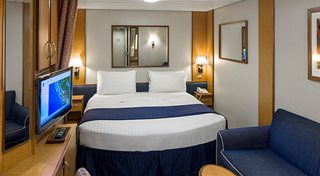
Category: 4V
- Our most budget-friendly option
- A cozy and comfortable retreat
- Perfect for long naps after an adventure-filled day
Beds
- One Royal King bed (can convert into two twin-size beds)
- One single sofa bed in staterooms with up to 3 or 4 guests
- One fold-down Pullman bed in staterooms with up to 3 or 4 guests
Size
- Stateroom: 170 sq. ft.

Category: 3V
- Our most budget-friendly option
- A cozy and comfortable retreat
- Perfect for long naps after an adventure-filled day
Beds
- One Royal King bed (can convert into two twin-size beds)
- One single sofa bed in staterooms with up to 3 or 4 guests
- One fold-down Pullman bed in staterooms with up to 3 or 4 guests
Size
- Stateroom: 170 sq. ft.

Category: 2V
- Our most budget-friendly option
- A cozy and comfortable retreat
- Perfect for long naps after an adventure-filled day
Beds
- One Royal King bed (can convert into two twin-size beds)
- One single sofa bed in staterooms with up to 3 or 4 guests
- One fold-down Pullman bed in staterooms with up to 3 or 4 guests
Size
- Stateroom: 170 sq. ft.

Category: 1V
- Our most budget-friendly option
- A cozy and comfortable retreat
- Perfect for long naps after an adventure-filled day
Beds
- One Royal King bed (can convert into two twin-size beds)
- One single sofa bed in staterooms with up to 3 or 4 guests
- One fold-down Pullman bed in staterooms with up to 3 or 4 guests
Size
- Stateroom: 170 sq. ft.
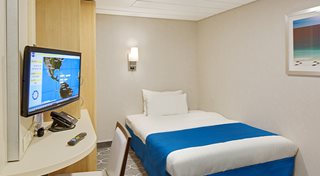
Category: 2W
- Sized perfectly for solo adventurers
- One of our most budget-friendly options
- Same amenities as all other staterooms
Beds
- One full-size bed
Size
- Stateroom: 108 sq. ft.

Category: ZI
This category can be booked for a special rate, guaranteed to you. Please note that the category is not associated at the time of booking with a specific stateroom, deck, bedding configuration or other particular settings. The assignment of an actual cabin will be performed during your check-in. The cabin can be anywhere on the ship.
Spectacular sights and amazing views from the comfort of your stateroom.
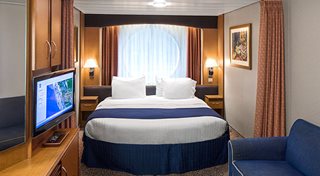
Category: 1N
- Budget-friendly with a view of the ocean
- Your very own in-stateroom window
- Great for families with small children
Beds
- One Royal King bed (can convert into two twin-size beds)
- One double sofa bed in staterooms with up to 3 or 4 guests
Size
- Stateroom: 170 sq. ft.

Category: 2N
- Budget-friendly with a view of the ocean
- Your very own in-stateroom window
- Great for families with small children
Beds
- One Royal King bed (can convert into two twin-size beds)
- One double sofa bed in staterooms with up to 3 or 4 guests
Size
- Stateroom: 170 sq. ft.

Category: 3N
- Budget-friendly with a view of the ocean
- Your very own in-stateroom window
- Great for families with small children
Beds
- One Royal King bed (can convert into two twin-size beds)
- One double sofa bed in staterooms with up to 3 or 4 guests
Size
- Stateroom: 170 sq. ft.

Category: 4N
- Budget-friendly with a view of the ocean
- Your very own in-stateroom window
- Great for families with small children
Beds
- One Royal King bed (can convert into two twin-size beds)
- One double sofa bed in staterooms with up to 3 or 4 guests
Size
- Stateroom: 170 sq. ft.

Category: CO
- Connects to the room next door
- Get "double" the space by booking both
- Great for families
Beds
- Royal King Bed (can convert into two twin-size beds)
Size
- Stateroom: 170 sq. ft.

Category: 4M
- Extra square footage at a great value
- Perfect if you need that little extra space
- Your very own in-stateroom window
Beds
- One Royal King Bed (can convert into two twin-size beds)
Size
- Stateroom: 170 sq. ft.
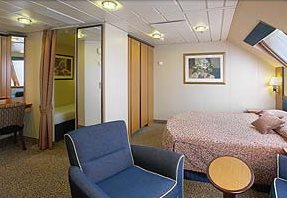
Category: 1K
- Even more square footage
- Dedicated bunk bed area
- Perfect for families or groups
Beds
- Two Royal King beds (each can convert into two twin-size beds)
- One twin-size bed
Size
- Stateroom: 265 sq. ft.

Category: YO
This category can be booked for a special rate, guaranteed to you. Please note that the category is not associated at the time of booking with a specific stateroom, deck, bedding configuration or other particular settings. The assignment of an actual cabin will be performed during your check-in. The cabin can be anywhere on the ship.
Enjoy the ambiance of our neighborhood balcony staterooms that overlook the Central Park and Boardwalk neighborhoods or take in breathtaking views from your Ocean View balcony stateroom.
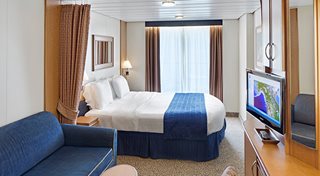
Category: 1B
- Extra square footage at a great value
- Perfect if you need that little extra space
- Private balcony with chairs for those pristine ocean views
Beds
- One Royal King bed (can convert into two twin-size beds)
- One single sofa bed in staterooms with up to 3 guests
- One double sofa bed in staterooms with up to 4 or 5 guests
Size
- Stateroom: 204 sq. ft.
- Balcony: 41 sq. ft.

Category: 2B
- Extra square footage at a great value
- Perfect if you need that little extra space
- Private balcony with chairs for those pristine ocean views
Beds
- One Royal King bed (can convert into two twin-size beds)
- One single sofa bed in staterooms with up to 3 guests
- One double sofa bed in staterooms with up to 4 or 5 guests
Size
- Stateroom: 204 sq. ft.
- Balcony: 41 sq. ft.

Category: 3B
- Extra square footage at a great value
- Perfect if you need that little extra space
- Private balcony with chairs for those pristine ocean views
Beds
- One Royal King bed (can convert into two twin-size beds)
- One single sofa bed in staterooms with up to 3 guests
- One double sofa bed in staterooms with up to 4 or 5 guests
Size
- Stateroom: 204 sq. ft.
- Balcony: 41 sq. ft.

Category: 4B
- Extra square footage at a great value
- Perfect if you need that little extra space
- Private balcony with chairs for those pristine ocean views
Beds
- One Royal King bed (can convert into two twin-size beds)
- One single sofa bed in staterooms with up to 3 guests
- One double sofa bed in staterooms with up to 4 or 5 guests
Size
- Stateroom: 204 sq. ft.
- Balcony: 41 sq. ft.
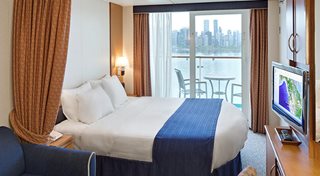
Category: CB
- Balcony stateroom that connects to the room next door
- Get "double" the space by booking both
- Great for families
Beds
- Royal King Bed (can convert into two twin-size beds)
Size
- Stateroom: 179 sq. ft.
- Balcony: 41 sq. ft.

Category: 1D
- Our standard balcony stateroom
- Pristine views of the ocean
- Private balcony with chairs
Beds
- One Royal King bed (can convert into two twin-size beds)
- One single sofa bed in staterooms with up to 3 guests
- One double sofa bed in staterooms with up to 4 guests
Size
- Stateroom: 179 sq. ft.
- Balcony: 20 - 41 sq. ft.

Category: 2D
- Our standard balcony stateroom
- Pristine views of the ocean
- Private balcony with chairs
Beds
- One Royal King bed (can convert into two twin-size beds)
- One single sofa bed in staterooms with up to 3 guests
- One double sofa bed in staterooms with up to 4 guests
Size
- Stateroom: 179 sq. ft.
- Balcony: 20 - 41 sq. ft.

Category: 3D
- Our standard balcony stateroom
- Pristine views of the ocean
- Private balcony with chairs
Beds
- One Royal King bed (can convert into two twin-size beds)
- One single sofa bed in staterooms with up to 3 guests
- One double sofa bed in staterooms with up to 4 guests
Size
- Stateroom: 179 sq. ft.
- Balcony: 20 - 41 sq. ft.

Category: 4D
- Our standard balcony stateroom
- Pristine views of the ocean
- Private balcony with chairs
Beds
- One Royal King bed (can convert into two twin-size beds)
- One single sofa bed in staterooms with up to 3 guests
- One double sofa bed in staterooms with up to 4 guests
Size
- Stateroom: 179 sq. ft.
- Balcony: 20 - 41 sq. ft.

Category: 5D
- Our standard balcony stateroom
- Pristine views of the ocean
- Private balcony with chairs
Beds
- One Royal King bed (can convert into two twin-size beds)
- One single sofa bed in staterooms with up to 3 guests
- One double sofa bed in staterooms with up to 4 guests
Size
- Stateroom: 179 sq. ft.
- Balcony: 20 - 41 sq. ft.

Category: XB
This category can be booked for a special rate, guaranteed to you. Please note that the category is not associated at the time of booking with a specific stateroom, deck, bedding configuration or other particular settings. The assignment of an actual cabin will be performed during your check-in. The cabin can be anywhere on the ship.
Exclusive experiences, inclusive amenities, luxury accommodations and more.
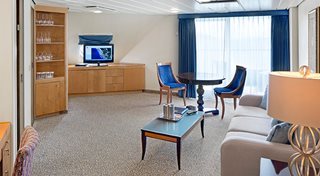
Category: OT
- High-occupancy two-bedroom and two-bathroom suite
- Perfect for groups or families
Beds
- Two Royal King beds (each can convert into two twin-size beds)
- One double sofa bed
Size
- Stateroom: 584 sq. ft.
- Balcony: 151 sq. ft.
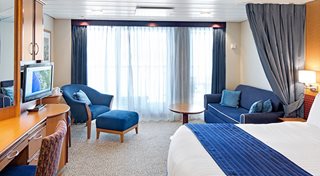
Category: J3
- Our standard suite for luxury
- Private balcony with two chairs
- Live the suite life on a budget
Beds
- One Royal King bed (can convert into two twin-size beds)
- One double sofa bed
Size
- Stateroom: 299 sq. ft.
- Balcony: 66 sq. ft.
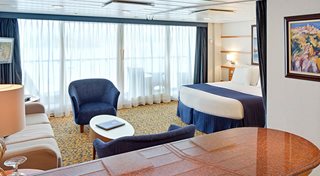
Category: GS
- Ample space, including a living room and full bathroom with a tub
- Private balcony with seating
- "Grandest" suite in the fleet
Beds
- One Royal King bed (can convert into two twin-size beds)
- One double sofa bed
Size
- Stateroom: 385 sq. ft.
- Balcony: 106 sq. ft.
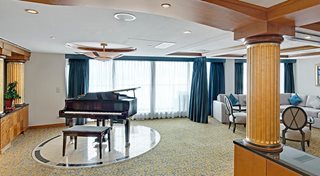
Category: RS
- Extra-large suite with expansive square footage
- Panoramic views with a large balcony
- Living area with baby grand piano
Beds
- One King-size bed
- One double sofa bed
Size
- Stateroom: 952 sq. ft.
- Balcony: 172 sq. ft.

Category: OS
- Larger and more luxurious than our one bedroom Grand Suites
- Put the extra square footage to use as you kick back and relax
Beds
- One Royal King bed (can convert into two twin-size beds)
- One double sofa bed
Size
- Stateroom: 532 sq. ft.
- Balcony: 57 sq. ft.

Category: WS
This category can be booked for a special rate, guaranteed to you. Please note that the category is not associated at the time of booking with a specific stateroom, deck, bedding configuration or other particular settings. The assignment of an actual cabin will be performed during your check-in. The cabin can be anywhere on the ship.
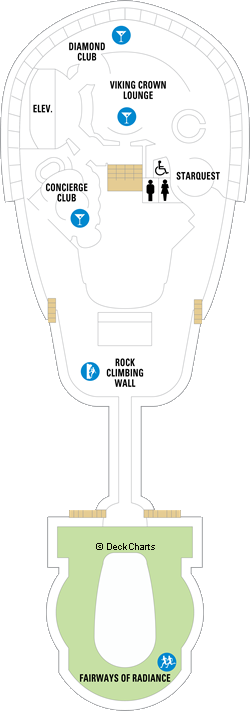
| Symbol | Description |
|---|---|
 | Stateroom for occupancy 5 and up |
 | Stateroom for occupancy up to 4 |
 | Accessible stateroom |
 | Stateroom has an obstructed view |
 | Stateroom for occupancy up to 3 |
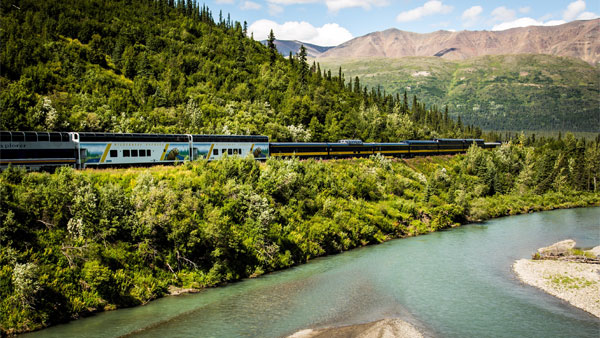
- Ship Name: Radiance of the Seas
- Year Built: 2001
- Year Refurbished: 2011
- Year Entered Present Fleet: 2001
- Ship Class: Radiance
- Maximum Capacity: 2,466
- Number of Passenger Decks: 12
- Number of Crew: 894
- Officers' Nationality: Norwegian
- Ocean-View without Balcony: 247
- Ocean-View with Balcony: 578
- Total Inside Staterooms: 246
- Tonnage (GRT): 90,090
- Capacity Based on Double Occupancy: 2,143
- Country of Registry: The Bahamas
- Total Staterooms: 1,071
- Suites with Balcony: 64
- Crew/Hotel Staff Nationality: International
Costco Member Reviews

Available Dates & Prices
Terms & Conditions
*Price shown is per person based on double occupancy, is valid for select stateroom categories only. Click on the Terms & Conditions link below for details.
†One Digital Costco Shop Card per room/stateroom, per stay. The exact amount of the Digital Costco Shop Card will be calculated during the booking process. The Digital Costco Shop Card promotion is nontransferable and may not be combined with any other promotion. A Digital Costco Shop Card will arrive by email approximately 10 days after the start of your cruise. Click on the Terms & Conditions link below for additional information.
Ship's registry: The Bahamas
Digital Costco Shop Card
This booking includes a Digital Costco Shop Card which will arrive by email one to two weeks after you return from your vacation. The Digital Costco Shop Card is a convenient payment option in our warehouses and on Costco.ca.


















